

Issue of Trans Fats:
Ohio Launches Healthy Oil Campaign
Learn about the potential premium opportunities in your area when you visit soybeanrewards.org
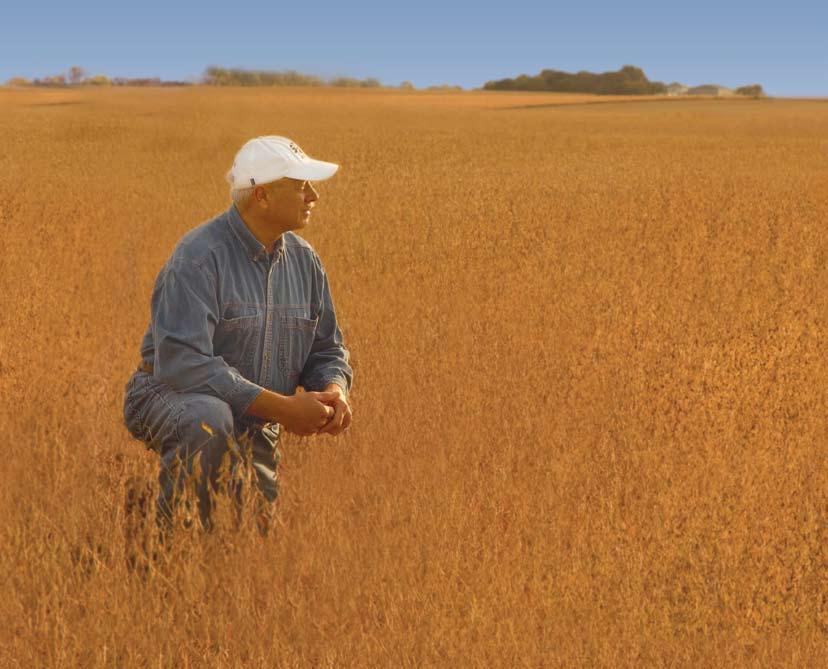
Companies and processors participating in Soybean Rewards include:
• Archbold Elevators, Inc.
• Archer Daniels Midland
• Bunge
• Cargill Inc.
• Consolidated Grain & Barge Co.
• HAPI-Ohio
• Mercer Landmark, Inc.
• Ottawa Feed & Grain
• Pioneer
• Wellman Seeds, Inc.
There are a range of programs offering a premium for specific soybean varieties or attributes, like Low Linolenic, Non-GMO or specific oil and protein content, to name a few.
Put the resources of the Soybean Rewards Program to work for you, check out all the opportunities at soybeanrewards.org. Earning a premium just got easier.

The Tradition Continues … Tune in to listen to Dale Minyo, Ohio’s most recognized farm broadcaster.




Ohio Soybean Council Annual Report
Page 10
This has also been an exceptional year for soybean composition, with checkoff investments in soy-based products at Battelle Memorial Institute paying off in a big way. Thousands of dollars in royalties have been paid, will go right back into more research opportunities. In addition, OSC was awarded its third R&D 100 award this year for the development of soy polyols, a significant achievement for the soybean checkoff.
WISHH for Health: Increasing Exports and Fighting Hunger
Page 14
The Ohio Soybean Council has long supported international marketing projects that seek to increase Ohio’s exports of soybeans. But one of these projects does a little more by using soy protein to improve the diets of people in developing countries around the world.
Ohio
Soybean Council Launches Progressive Campaign to Promote Healthy Soy Oil
Page 16
It seems everywhere you go, there’s no escaping the issue of trans fats. It’s in the news, the grocery aisles, state and local governments, and it’s even a popular topic of conversation on the farm.
Don’t Slack on Variety Selection: Let High Prices Motivate Your Evaluation Opportunities
Page 20
With $9-plus per bushel prices, the tendency may be to slack on the time spent selecting the right soybean varieties for 2008 and beyond. But the truth is, even with the best prices in years, seed specialists say growers must still choose varieties wisely.
About the cover
Because more and more Americans are trying to avoid trans fats in their diets, the Ohio Soybean Council launched Soy Oil Ohio, a campaign that seeks to educate soybean farmers and consumers about low-linolenic soybeans. The oil derived from low-linolenic soybeans limits the need for hydrogenation, the process that creates trans fats.
cover photo courtesy of the soyfoods council.
OUtLOOK
Ohio Soybean Association
918 Proprietors Road, Suite A
Worthington, OH 43085
614-476-3100
614-476-9576 fax
1-888-SoyOhio (769-6446)

Ohio’s Vision for the Future

this is always a good time of year to reflect on what has occurred, both good and bad, and learn from those experiences. But don’t spend too much time on what is now history. Spend more time mapping your future and thinking about the effects your decisions will have on the future of Ohio agriculture!
How far out are you planning the viability or sustainability of your operation – three years, five years? Try 12 years! Both the Ohio Soybean Association (OSA) and the Ohio Soybean Council (OSC) are doing just that with Ohio Soy 2020, a program that utilizes a steering committee made up of 20 leaders throughout the soybean value chain who will collectively help to keep soybeans a viable crop in Ohio. Think about what you were doing 12 years ago, how much technology has changed and how many new inventions and innovations have been developed during those years. Now just think for a moment about how fast technology, new markets, inventions and innovations will continue to develop in the next 12 years. Invention is the best way to predict the future!
Think about why you are growing soybeans in Ohio. Besides being the No. 1 cash crop in Ohio, you are growing them because of the yield and agronomic improvements as well as the market demand – not only in the United States, but abroad. Your soybeans are not just for food
anymore. Inventions for using soybeans in fuel, plastics, polymers and other industrial materials didn’t just occur. These great advances were yielded from the success of individuals imagining what could be created if a soybean had a certain trait, and the end result was a higher valued soybean. These ideas came from some of the greatest inventors and innovators the world has ever known – the American farmer. It just took industry, legislation and checkoff dollars to realize the imaginations of many. Imagine now what can be accomplished in your future.
As I talk with industry leaders and farmers from around the state, I ask them to categorize Ohio farmers. The two common terms I hear are “farm gate,” a producer growing a commodity bean for local prices, and the “innovator,” one who is finding that premium-based growing opportunity such as low-linolenic soybeans. Which one are you?
In essence, this is a team effort. We need both types of growers to round out our team. No one type of grower will make the team great. This is why we need industry, legislation and checkoff dollars working together as a team to make sure we deliver success for the Ohio soybean producer!
John A. Lumpe Executive Director Ohio Soybean Association Ohio Soybean Council
President
Mark Watkins, Hardin County chairman
Jeff Sollars, Fayette County
Vice President Membership
Jeff Wuebker, Darke County Secretary
Dave Dotterer, Wayne County treasurer
Bret Davis, Delaware County trustees
Bill Agle, Clark County
Jerry Bambauer, Auglaize County
John Buck, Marion County
Mike Heffelfinger, Van Wert County
Kevin Homan, Henry County
Rob Joslin, Shelby County
Ed Lamalie, Sandusky County
Lyle McKanna, Putnam County
Clark Myers, Mahoning County
Dale Shawk, Crawford County
Bruce Simmons, Medina County
Bob Slicker, Stark County
Joe Steiner, Warren County
AMericAn SoybeAn ASSociAtion DirectorS
Rob Joslin, Shelby County
Joe Steiner, Warren County
Mark Watkins, Hardin County industry Affiliates
Kathy Alvarez, Bunge NA
Jim Beuerlein, The Ohio State University
Andrea Guckes, Cargill Inc.
Don Ralph, Ohio Farm Bureau Federation Staff credits
John Lumpe....Publisher
Ann Clinton Millsap....Editor
Jamie Butts....Editorial Manager
Shelby J. Ostrander....Senior Creative Advisor
Gary Usovsky....Senior Creative Advisor
Jennifer Coleman....Staff Writer
Rob Stewart....Publications Production Assistant
David Larson....Sales Director
The Ohio Soybean Review is published six times a year by the Ohio Soybean Association in partnership with the Iowa Soybean Association. For address corrections contact the Ohio Soybean Review 4554 NW 114th Street
Urbandale, Iowa 50322-5410
Phone: (515) 251-8640
E-mail: sheath@iasoybeans.com
For advertising information in the Ohio Soybean Review, please contact Larson Enterprises, (515) 440-2810, or larson6@mchsi.com
To contact the editor e-mail: aclinton@iasoybeans.com Comments and statewide news articles should be sent to the above address. Advertising space reservations must be made by the first day of the month preceding publication. In consideration of the acceptance of the advertisement, the agency and the advertiser must, in respect of the contents of the advertisement, indemnify and save the publisher harmless against any expense arising from claims or actions against the publisher because of the publication of the content of the advertisement.

Governor’s Jobs stimulus package benefits Agriculture
A$1.7 billion ballot issue, to be placed before Ohio voters in November 2008, would appropriate millions of dollars of new investments in biobased fuels and products. The program was announced during the Governor Ted Strickland’s State of the State address. It would also earmark $400 million to replace the original Clean Ohio bond program, which funds farmland preservation, cleanup of old industrial sites, green-space purchases and recreational-land purchases. Through issuing bonds, the plan will invest the following in the interest of agriculture:
• Generate $250 million in advanced and renewable energy development including wind, solar and clean-coal projects.
• $100 million in bioproducts that use renewable agricultural products instead of petroleum-based products.
• $400 million for Clean Ohio funding, which replaces the original Issue
One Bond program begun by Governor Taft in 2001.
• $150 million to create a network of roads, rails and ports to support better transportation of agriculture and other products.
State creates fuel Production taskforce
The Ohio Senate is currently at work analyzing and identifying opportunities for Ohio to maximize the fuel supply in the state. This work is being done by the Fuel Production Taskforce, created by Sen. Steve Buehrer, R-Delta, through House Bill 371 in the 126th General Assembly. The taskforce consists of members from the Ohio Senate and the Ohio House of Representatives as well as other industry representatives. The Ohio Farm Bureau is representing agriculture.
Chaired by Buehrer, the committee has been charged with studying the opportunities for and barriers to increasing the number of refineries in the state
of Ohio in order to determine ways to maximize the fuel supply in the state. The taskforce will also look at barriers and impediments to increasing the agriculture-related fuel production within the state.
Buehrer has asked to take testimony from various entities engaged and knowledgeable in the different fuel production fields. The Ohio Soybean Association will offer testimony as an interested party and will provide background on Ohio’s soy biodiesel industry.
“People all across the State of Ohio are feeling the sting of the high price of gas, not just at the pump but also in the cost of heating their homes and fueling their businesses,” Buehrer says in a letter to taskforce appointees. “My hope is through the taskforce we are able to identify and address some of the potential hindrances facing Ohio as we strive to be a national energy leader.”
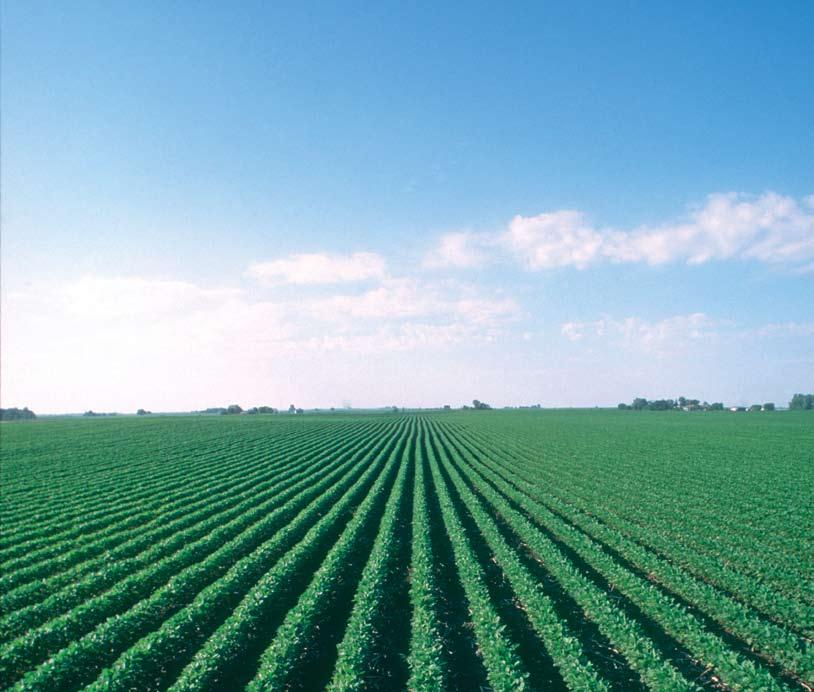

OSA 2008 Membership Campaign in Full Swing Become
an Active Recruiter and Get Paid
the Ohio Soybean Association (OSA) is gearing up for what will hopefully be another successful membership campaign. The OSA board of directors has set a rigorous goal of recruiting an additional 296 new members while retaining its 1,225 members whose memberships expire this year.
Not only does it take a lot of hard work from OSA’s dedicated board of volunteer farmer-leaders, but success can also be achieved with the help of OSA members like you!
OSA is inviting you to get involved in the recruiting process, and, if you meet the program requirements, we will pay you for your efforts.
New OSA Recruiter Incentive Program
OSA needs your help in reaching its 2008 membership goal. Become an active recruiter and get paid! For every five new one or three year members successfully recruited, you will receive a $100 gift card to a restaurant or retail store you select from a list of participating companies.
For details on how to get involved –contact Jamie Butts at the Ohio Soybean Association at 888-SOY-OHIO or by email at jbutts@soyohio.org. Brochures with membership applications will be mailed to all participating recruiters.
2008 OSA Membership Rates
One-year membership = $75
Three-year membership = $195
Seed Incentive Program
Join or renew as a three-year member and receive a coupon worth $195-off the purchase of a minimum of 100 bags of soybean seed from a participating company.












Other Membership Benefits:


n 15 percent discount on Carhartt clothing at any participating JD Equipment location.
n 10 percent discount on one-time purchase at Tractor Supply Company.
n $50-off the purchase of crop protection products.
n Rebate coupon for 5 cents/gallon up to 2,000 gallons of soy biodiesel.
n Cargill Harvest Scholars – Cargill will contribute a $50 matching contribution on a first-time deposit into a College Savings Account.
n Subscription to Ohio’s Country Journal*
n Discounted subscription rate of $20.00 to Fastline Publications*.
n Six issues of the Ohio Soybean Review magazine*
n Nine issues of the Ohio Leader Letter*
* One-year membership incentives include items marked with an asterisk.
PREMIUM CORN GENETICSAT REASONABLE PRICING
VTT Triple and Triple Stack Hybrids (RR2 YieldGard Plus®) bred to perform in the Eastern Corn Belt! Seed Consultants, Inc. is committed to the strongest research and testing program in the Eastern Corn Belt with 43 replicated corn locations and 50,500+ replicated corn yield plots.
VTT Triple and Triple Stacks (Higher Price = Lower Cost)...when you pencil herbicide costs, crop safety issues, maximum insect protection, grower safety, outstanding stress mitigation, SCI’s reasonable pricing, and proven technology on proven genetics; I would urge growers to strongly consider this outstanding management tool for 2008 planting.

SPREMIUM SOYBEAN GENETICSAT REASONABLE PRICING
“Cutting Edge” Soybean Genetics...from Seed Consultants, Inc. with access to the largest and most elite germplasm, breeding programs, and testing system within the seed industry, complimented by the Eastern Corn Belt’s most extensive replicated testing program (26 replicated soybean locations and 15,000+ replicated soybean yield plots.
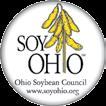
A Cutting-Edge Approach to AnimAl Agriculture educAtion
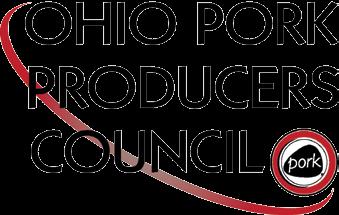
by Jennifer Coleman
in recent years, “edutainment,” or educating while entertaining, has become one of the most powerful Internet communication tools, influencing young people at a rapidly increasing rate. Unfortunately, growing public misconceptions about modern animal agriculture practices are often reaching the younger generations through this type of technology.
As a result, the Ohio Pork Producers Council (OPPC), with funding from the Ohio Soybean Council (OSC) and the soybean checkoff, has developed a new, cutting edge Web site and video education project designed to grab attention and deliver accurate pork industry information and images to the public. This project will be informative for adults, but it will also meet the students’ desire to learn through technology, thereby reaching the younger generations.
“We have to reach out to young people and give them an accurate portrayal of the animal agriculture industry,” says John Lumpe, OSC executive director.
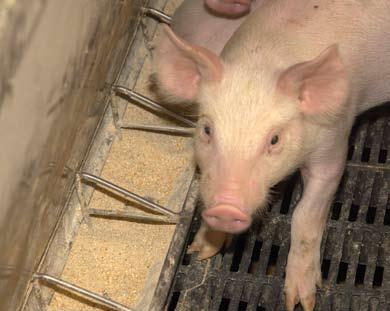
“There are a lot of negative images reaching the public through the Internet, so we need to use the Internet to spread our messages as well.”
OPPC will use this education tool to answer specific questions about how modern livestock farms operate, human and environmental health issues, as well as questions about animal care, antibiotics and organics. The project will also reinforce a positive image of pork producers and emphasize their commitment to care for their animals, protect the environment, be energy conscious, and contribute to a safe and affordable food supply.
“Ohio’s pork producers care for their animals and the environment because it’s the right thing to do,” says Jennifer Keller, OPPC director of marketing and education. “We want to share the success of Ohio’s hardworking pork producers with the nonfarm public. If the community can put a face with our industry and better understand why we do what we do, we will all be better neighbors to each other.”
Both the new Web site and video magazine will work together to reach farmers, industry influencers and consumers, as well as teachers and students in Ohio science classrooms. Visitors to the Web site will be able to take a virtual tour of a working livestock farm and watch a video highlighting Ohio farmers and farming operations. Anyone can sign up to receive the video magazine through e-mail, and accompanying lessons and activities will fit the needs of teachers and students across many grade levels.
Growth in the animal agriculture industry will depend upon public perceptions and the delivery of accurate information. This Web site and video education tool will help raise awareness for producers and the public about the importance of animal agriculture and help them learn the truth.
Visit this new Web site and watch the video magazine at www. ohioporktour.com

ohio SoybeAn council
Annual Report
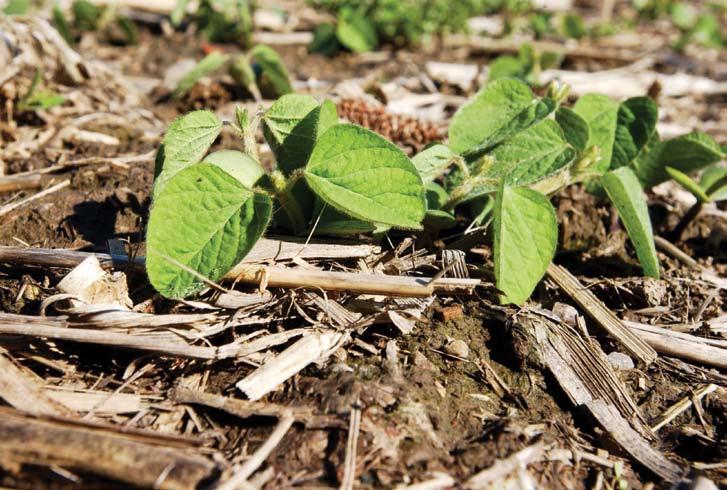
ohio SoybeAn council
F
Annual Report F

• In conjunction with Battelle Memorial Institute, the Ohio Soybean Council was awarded its third R&D 100 award for soy-based polyols in September.

• In 2007, the Ohio Soybean Council received over $20,000 in royalties for the commercialization of soy-based toner, powder coatings and plasticizer – technologies developed in conjunction with Battelle Memorial Institute.
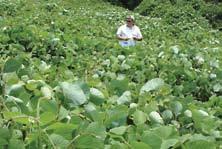
• In July, Ohio Soybean Council board members John Buck and Keith Kemp attended a soybean rust identification course in Quincy, Fla.

• The Ohio Soybean Council had a display at the 2007 Farm Science Review, which showcased what the soybean checkoff is doing to promote animal agriculture, international marketing, production research, new uses and soy biodiesel.

• The Ohio Soybean Council sponsored the 2007 Pork Rib-Off at the Ohio State Fair. Fat Freddy’s Sticky Q won an award for the best barbeque sauce containing soybean oil.

• The Clean Air for Kids campaign was launched this year, promoting soy biodiesel use in Ohio school buses for the benefit of the environment and the health of Ohio’s students.

• The Ford Model U concept car, with soy foam seats and a soy-based tailgate displayed at the at the Ohio State Fair and Farm Science Review, serves as Ford Motor Company’s vision for the future. This year, Ford also announced it would incorporate soy-based foam into the 2008 Ford Mustang.


• The Ohio Agricultural Research and Development Center’s soybean breeding program achieved a record number of variety crosses this year, thanks to investments made by the soybean checkoff and the newly formed Ohio BioProducts Innovation Center.

• Ohio Soybean Council staff helped educate participants in the Youth Pork Leadership program about the importance of the soybean and pork industries working together.
John buck looks for soybeAn rust in A field of kudzu.
cleAn Air for kids displAy At the ohio stAte fAir.
steve st. MArtin, oArdc soybeAn breeder
photo courtesy of © ford Motor coMpAny.


• The Ohio Agricultural Research and Development Center opened a new facility this year that will increase the amount of research and technology that can be used for the benefit of the soybean industry.

• The Ohio Soybean Council and the soybean checkoff continue to fund projects with the United States Meat Export Federation in an effort to promote animal agriculture in international markets.
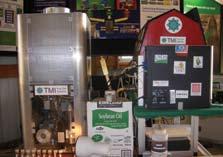
• Technology Management Incorporated (TMI), a Cleveland-based company, has developed a fuel cell that runs on, among other fuels, raw soybean oil. Its first public demonstration took place at the Farm Science Review and, recently, the Ohio Soybean Council awarded its third grant to TMI for further development of this technology.

• The newly formed Ohio BioProducts Innovation Center has brought the agriculture and chemical industries together in order to increase the development and commercialization of soybean technology.

• This year, the Ohio Soybean Council and soybean checkoff began the first biodiesel quality-testing program for fuel distributors in Ohio. This is a voluntary program for fuel producers in Ohio.
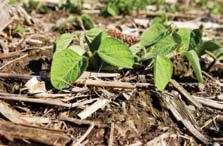
• The Ohio Soybean Council funds part of the sentinel plot system, an important defense and research tool against a wide variety of soybean diseases and pests.

• Aquaculture continues to play an important role in international markets, and the soybean checkoff is working to increase the amount of soy used in this growing industry.
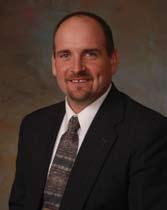
Dear Ohio Soybean Farmers:
I am happy to present to you the Ohio Soybean Council’s (OSC) 2007 Annual Report. It’s hard to believe it’s the beginning of another year. OSC has certainly accomplished a great deal in 2007.
Your checkoff dollars have helped to fuel the growing soy biodiesel industry with a new quality testing program as well as a campaign to put more soy biodiesel in school buses, and they continue to support and promote our No. 1 customer, animal agriculture.
This has also been an exceptional year for soybean composition, with checkoff investments in soy-based products at Battelle Memorial Institute paying off in a big way. Thousands of dollars in royalties have been paid, which will go right back into more research opportunities. In addition, OSC was awarded its third R&D 100 award this year for the development of soy polyols, a significant achievement for the soybean checkoff.
It’s been a very successful year for Ohio’s soybean industry, and 2008 looks to be just as exciting, with a total of five focus areas: animal agriculture, soy biodiesel, international marketing, production research and new uses.
Let’s take a closer look at each of the 2007 focus areas.
Animal Agriculture
Animal agriculture continues to play an increasingly important role in the soybean checkoff’s investment portfolio, as livestock and poultry are the No. 1 consumers of soybean meal. OSC values the relationships it has developed with livestock organizations through checkoff investments including the Ohio Livestock Coalition, Ohio Pork Producers Council, the Ohio Cattlemen’s Association and the Ohio Poultry Association. The soybean checkoff also works cooperatively with national animal agriculture organizations including the U.S. Meat Export Federation and the USA Poultry and Egg Export Council.
Soy biodiesel
Thanks to Ohio soybean farmers, Ohio is now home to four production facilities – which produce more than 60 million gallons of soy biodiesel annually – 150 distributors and 50 retail locations. OSC is also funding two new, exciting programs that will continue to build demand for soy biodiesel. The first of these is a first-ever statewide soy biodiesel testing program, which will help address the need for quality testing and ensure a good experience by consumers by making test results available to Ohio’s fuel marketers. The second new program is Clean Air for Kids, a promotional campaign that will help educate Ohio schools about grant opportunities for using soy biodiesel in school buses.
Soybean composition
OSC has remained committed to the support of research that improves soybeans in many ways – disease resistance, increased yields and soybean varieties that meet the needs of the industrial sector. Some of the latest developments in soybean research at The Ohio State University’s Ohio Agriculture Research and Development Center involves using marker technology to identify genes in a particular variety that exhibit specific characteristics, and then helping those varieties to develop faster.
Finally, the newly formed Ohio BioProducts Innovation Center brings together research and industry with a focus on commercial applications such as tailoring specific soybean varieties to meet new use requirements. Already, with over $45,000 in royalties, commercial success has been realized with soy-based ink toner, soy-based powder coatings, polyols and plasticizers.
The Ohio Soybean Council is looking forward to another great year in 2008, and we wish you all the best in your farming operation as you prepare for another planting season.
Sincerely,

Daniel Corcoran OSC Chairman

You can’t always be here. But ASA can.

Some of the most important decisions affecting your soybean operation are made by people who have never set foot in a soybean field. Membership in the American Soybean Association makes sure these policymakers understand what really goes on in the country. While you’re working hard on your farm, ASA and your state soybean association are working hard to create policy that increases demand for your soybeans and protects your profitability: Soybean prices are significantly higher today thanks to ASA success in creating biodiesel tax incentives. Trade agreements influenced by ASA have brought millions of dollars in new exports of U.S. soybeans and soybean meal. There would be no safety net in the Farm Bill if ASA didn’t help build it. The law says your soybean checkoff can’t do these things. But ASA can. And does—every day. If you believe we’re doing important work, join us. Your membership will make our voice even stronger. If you believe, belong.

WISHH for Health: Increasing Exports
and Fighting Hunger
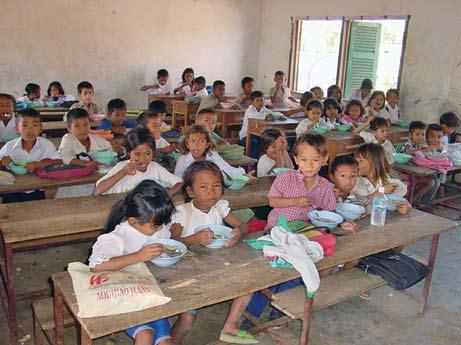
by Jennifer Coleman
the Ohio Soybean Council (OSC) has long supported international marketing projects that seek to increase Ohio’s exports of soybeans. But one of these projects does a little more by using soy protein to improve the diets of people in developing countries around the world.
The World Initiative for Soy in Human Health (WISHH) was created by U.S. soybean farmers and their checkoff in 2000. Its mission is to create sustainable solutions for the protein demands of people in developing countries through the introduction and use of soy products.
“From our perspective, there is a longterm international marketing benefit for
Ohio soybean farmers by supporting WISHH programs,” says Kirk Merritt, OSC director of international marketing.
“WISHH is trying to alleviate hunger and help people have a better diet, while at the same time creating new, sustainable markets for soybeans.”
One of WISHH’s main strategies is to introduce and increase the use of U.S. soy protein to local food companies in these developing countries. In Ghana, WISHH partnered with the School Feeding Program in the Accra region to implement a school lunch program using U.S. soy. Currently, this program is feeding 250 school children.
WISHH’s other main strategy is to increase the diversity and volume of soy protein moved under U.S. and other food aid programs. In Vietnam children make up around 41 percent of the total
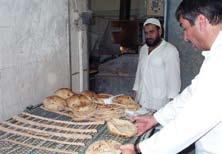
population, and nearly 30 percent of all children under the age of 5 are affected by malnutrition. WISHH is working with local organizations, including the Vietnam Red Cross to enhance the diets of school children and piloting a school lunch program for ethnic minorities.
“Soy is an excellent source of protein,” Merritt says. “And because WISHH programs are funded by other state soybean organizations, national soybean organizations and private companies, we are contributing to something larger than ourselves.”
In the seven years since WISHH was created, it has launched more than 14 different activities in Africa, South Asia and Central America. In 2007 alone, WISHH representatives made more than 30 visits to different countries around the world promoting soy as a valuable protein resource.
“I feel honored to serve on the WISHH board,” says Mike Clark, OSC and WISHH board member. “OSC is taking a responsible leadership role in world humanitarian programs to demonstrate the benefits of soy protein in developing countries, especially for children. We all serve on these committees in order to make a difference, and I truly believe this is one of the most worthy initiatives.”
For more information about WISHH and its programs, visit www.wishh.org
Bangladesh
Bangladesh is one of the poorest countries in the world, with more than 47 percent of people living below the poverty line. About two-thirds of children are malnourished. WISHH partners have worked with local businesses to develop high-protein cookies for use in the school snack program to address the problem of protein malnutrition among school children.

Honduras
WISHH activities in this country center on possible expansion of soy use in school lunch and weaning food programs. WISHH has incorporated soy into the Honduran government’s school lunch program through support of local bakers creating a soy-fortified cookie.
Cambodia
WISHH is in project development dialogue with several organizations to support their purchase of U.S. soy. One of them has received several hundred tons of U.S. soy flour for their noodle fortification program.
Kenya
After several years of technical transfer, a commercial company in Kenya is importing U.S. soy flour. WISHH achieved this result by shipping a container that was distributed to several Kenyan food companies to demonstrate commercial utilization of soy protein in baking, meat processing and cereal products. WISHH also supported the product with technical consultants to ensure proper utilization.
South Africa
WISHH has built an alliance with several private companies – leveraging grant resources with private sector cash, product and expertise – in an effort to increase activity in the commercial sector around foods and better nutrition.

Ohio Soybean CouncilLaunches PrOgreSSive CamPaign tO Promote healthy SOy Oil
by Tom Heiby guest columnist
it seems everywhere you go, there’s no escaping the issue of trans fats. It’s in the news, the grocery aisles, state and local governments, and it’s even a popular topic of conversation on the farm.
That’s because consumer demand, and a ruling by the Food and Drug Administration requiring the listing of trans fats on nutrition labels, has created a rapidly growing desire from food industries to find an alternative to cooking oils loaded with trans fats.
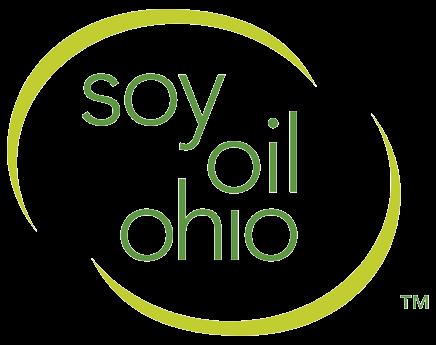
“The use of this new variety represents the future of soybean farming in Ohio because of the demand that’s been created by recent government legislation and the public’s desire for healthier foods,” Lumpe says.
To address this demand for a healthier alternative, the Ohio Soybean Council (OSC) and the soybean checkoff have launched an ambitious and innovative new campaign – Soy Oil Ohio – to encourage Ohio farmers to plant low-linolenic soybeans and educate consumers about trans fat-free cooking oils made from soybeans.
“Soy Oil Ohio is designed to educate farmers and consumers about the health benefits and financial sense inspired by the
planting of low-linolenic soybeans,” says John Lumpe, OSC executive director. Many state and local governments, as well as forward-thinking restaurants, have already banned trans fats in response to the FDA’s ruling and the insistent outcry of a health-conscious public.
Soybean oil, which includes most brands sold as vegetable oil, accounts for almost 80 percent of all edible oil in the U.S., and the goal of the U.S. and Ohio soybean industries is to keep soybean oil at the top of the list.
In cooperation with Clary Communications of Columbus, Ohio, OSC and the soybean checkoff developed Soy Oil Ohio, the first statewide program of its kind, as a result of research it conducted among farmers and health-conscious consumers. OSC wanted to understand the common perceptions of low-linolenic soybeans among farmers. It was also important to know what Ohio consumers knew about trans fats and low-linolenic soybeans.
Surprisingly, most of the consumerparticipants in the research project were unaware that vegetable oil is primarily soybean oil. Also, not surprisingly, most consumers were unaware of low-linolenic soybeans and the health benefits they provide. The research
photo
clearly demonstrated the need for widespread education on trans fats and low-linolenic soybeans.
“The research showed us that we must educate consumers, about the health benefits of using cooking oils that use low-linolenic soybeans, and farmers, of the potential economic benefits of growing this new variety,” Lumpe says.
In addition to education, Soy Oil Ohio is a valuable resource for farmers and consumers. Soy Oil Ohio maintains an informative Web site at www.soyoilohio.org
As part of the Soy Oil Ohio campaign, OSC developed an advisory committee to its board of directors. The committee is comprised of representatives from grocery stores, restaurant associations, health organizations, seed companies, processors and farmers.
Additionally, many farmers are already reaping the rewards of planting low-linolenic soybeans.
“We’re incredibly satisfied with the low-linolenic yields,” says Darryl Ricketts, a farmer from Rockford, Ohio.
“They did as well or better than regular Round Up Ready™ soybeans. We will plant more acres of low-linolenic soybeans next year.”
The demand for low-linolenic soybeans continues to rise, creating a great opportunity for Ohio and U.S. soybean farmers to help improve Americans’ dietary habits while creating a new revenue stream for their farms.
In 2007, there were over 250,000 acres of low-linolenic soybeans planted in Ohio – the second most acres in the U.S. behind Iowa. This number will likely double in 2008.
A major concern is the demand is too great, and businesses such as food processors and restaurants will be forced to go outside the country to find an alternative to soybean oil, such as palm and canola oils. Therefore, OSC and the soybean checkoff will continue to promote low-linolenic soybeans for the ultimate profitability of Ohio’s soybean farmers.


About Trans Fats and Low-Linolenic Soybeans
• Trans fats are created when oils go through a hydrogenation process, which increases the stability and shelf life of various food products. Currently, about half of all soybean oil is hydrogenated.
• Processed foods, such as crackers, chips, etc., typically use partially hydrogenated oil so they have a longer shelf life.
• To address the issue of trans fats, the soybean industry has developed a new variety of soybean that does not require hydrogenation, which means it is trans fat-free. This innovative, new soybean variety is called low-linolenic soybeans.
• Low-linolenic soybeans, on average, produce less than 3 percent linolenic acid as an oil component, compared with 8 percent for conventional soybeans.
photo courtesy of

OSC Adapts National Strategic Planning Program to Benefit Ohio Soybean Industry

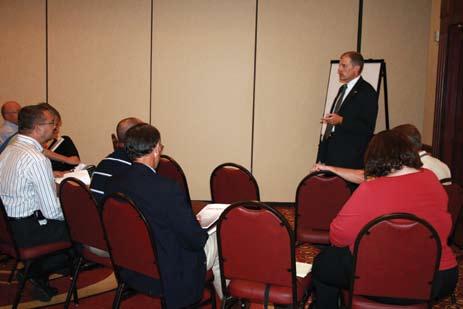
by Jennifer Coleman
it is impossible to predict with certainty what the U.S. and Ohio soybean industries will look like in the year 2020. But it is possible to establish long-term strategies that will maintain those industries’ value regardless of what the future holds.
For this reason, the United Soybean Board (USB) established Soy 2020, a strategic planning effort that looks at all possible futures and establishes strategies that will help the U.S. soybean industry find opportunities, face challenges and maintain value through the year 2020.
“The primary objective of Soy 2020 is to provide overarching vision and strategies for all segments of the U.S. soybean industry, and to ‘win’ in what is an increasingly global and changing
environment,” says John Demerly, ABG senior consultant and Soy 2020 project manager.
The Ohio Soybean Council (OSC) saw the value in Soy 2020’s strategic planning for the U.S. soybean industry and wanted to apply it in Ohio. In 2007, OSC adapted the program to create Ohio Soy 2020, making it the first state to create a statewide Soy 2020 program.
“The objective of Ohio Soy 2020 is to keep Ohio’s soybean industry moving forward, maintain a thriving soybean industry at the state and national levels, and to map and execute a plan for the future,” says Dan Corcoran, OSC chairman. “It is important to keep both the state and national soybean industries strong, and planning is key.”
Like the national version, Ohio Soy 2020 brings together representatives from virtually every facet of Ohio’s
soybean industry working toward one goal – building a successful soybean industry in Ohio over the next 12 years. But the process of envisioning possible futures and making strategy recommendations could be ongoing due to unforeseen events, which is why the participants in the strategic planning are so important.
“Numerous stakeholders representing all facets of the soybean value chain provide input to the plan,” Demerly says. “The diversity of the participants allows for a more holistic view of the soybean industry.”
The first Ohio Soy 2020 strategic planning forum was held in August of last year. Participants heard from experts about the current state of the Ohio soybean industry and what kind of challenges it faces. Breakout sessions allowed groups to formulate and discuss possible strategies.
“For Soy 2020 to be successful, state soybean organizations and commercial organizations need to take specific action to support the national Soy 2020 vision,” Demerly says. “Ohio Soy 2020 brings together important industry stakeholders from Ohio to identify and address key competitive issues, identify opportunities and prioritize resources.”
For more information about Ohio Soy 2020, visit www.soyohio.org.
For more information about Soy 2020, visit www.soy2020vision.com
kirk Merritt with the ohio soybean council leads a focus group at the first ohio soy 2020 strategic planning forum.

Ohio Soybean Council Foundation: Scholarship Opportunities Available
by Jennifer Coleman
the Ohio Soybean Council (OSC) and the soybean checkoff have long supported scientific research and educational programs that promote the long-term health of the Ohio soybean industry. In 2007, in an effort to contribute to these two initiatives in a new way, OSC created the Ohio Soybean Council Foundation.
The OSC Foundation’s mission is to support scientific research and educational opportunities to the benefit of the soybean industry. As a 501c3 organization and public charity, it seeks partnerships with companies and individuals who share its vision for giving back to the community, strengthening Ohio’s economy and ensuring a successful future for Ohio soybean producers.
“The Ohio Soybean Council Foundation is an exciting way to build partnerships that benefit soybean producers and the soybean industry across Ohio,” says Dan Corcoran, OSC chairman and Pike County soybean farmer. “We are all very excited about the projects being planned, and what they will contribute to the industry.”
In 2008, the OSC Foundation hit the ground running and launched the Ohio Agricultural Science and Bioproducts Research Scholarships. This scholarship program is designed to promote the application of science and technology to agriculture. More specifically, it encourages undergraduate students to pursue careers in agricultural science and supports ongoing graduate-level research on soy-based bioproducts.

“The list of industrial applications for soybeans continues to grow, and it is important to support the science and technology behind these applications,” says Kirk Merritt, OSC Foundation director of outreach and programs. “These scholarships are a great opportunity for students, and they will help strengthen an important part of the Ohio soybean industry’s future.”
Five scholarships of up to $3,000 each are available for undergraduate students who are current Ohio residents. Applicants must be enrolled as a fulltime student at an Ohio college or university and attained at least junior status by the fall of 2008. Eligible fields of study include agricultural science, agricultural engineering, agricultural communications, biochemistry, bioengineering or a related field. Applicants must also demonstrate the desire to pursue a career focused on the application of science and technology to agriculture.
Two scholarships of up to $5,000 each are available to graduate students who are enrolled as a full-time student at an Ohio college or university and have proof of legal residency in the United States.
Applicants must be conducting research in bioproducts, biobased materials, bioengineering, biopolymers or a related field, and focused on the development and use of biobased products and materials derived from soybeans.
The deadline for OSC Foundation scholarship applications is April 1, 2008.
The OSC Foundation is also planning a workforce development program, to help prepare K-12 students for productive work in the bioproducts industry, and a risk management-training program for soybean producers, to help them manage and reduce business risks. Dates for the launch of these programs will be announced later this year.
“The OSC Foundation’s support for education, science and technology will contribute to the ongoing development of new ideas and products, ensuring continued prosperity for Ohio soybean farmers,” Merritt says.
For more information about the OSC Foundation scholarship opportunities or to download the application forms, visit www.soyohio.org and click on Ohio Soybean Council. Or, contact Kirk Merritt by phone at 614-476-3100 or e-mail kmerritt@soyohio.org.

Don’t Slack on Variety Selection
Let High Prices Motivate Your Evaluation Opportunities
With $9-plus per bushel prices, the tendency may be to slack on the time spent selecting the right soybean varieties for 2008 and beyond. But the truth is, even with the best prices in years, seed specialists say growers must still choose varieties wisely.
Emerson Nafziger, University of Illinois Extension agronomist, and Palle Pedersen, Iowa State University Extension agronomist, suggest that before adopting another management system, management practice or new variety, weigh the costs and benefits and consider the effect on longterm profitability and risk exposure.
You also need to consider how you will evaluate the soybean seed you ultimately purchase.
“To minimize the risk, it is smart to test ideas on a small scale first,” Nafziger says. “While that often means on your own farm, there can be some danger that comparisons done in only one field for one year might cause us to put our trust in treatments that might not repeat their performance the next time we use them. It is possible to trust the results you get in these situations, but because results usually vary over locations and years, we can never be 100 percent certain that a treatment is a ‘sure thing.’”

Both agronomists note that “splitfield” trials, with one variety or treatment on one side of the field and the other on the opposite side, are simple, easy to observe and helpful in terms of seeing what a new treatment or variety looks like.
“Getting good yield information from such a test is tricky, though, simply because most fields do not yield the same on both halves even when everything is uniform,” Pedersen says. “Any difference due to the side of the field becomes part of the yield of that treatment, and we have no way to separate location effect from treatment effect.”
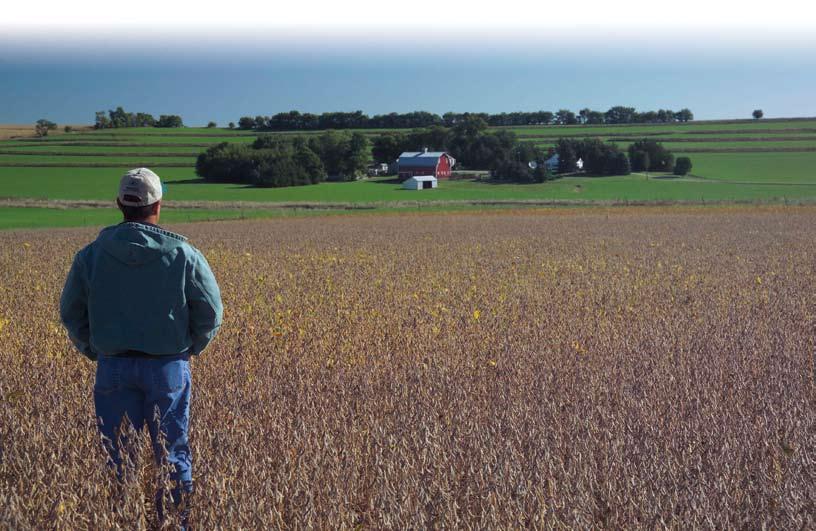

Alternately, if you run a similar comparison in three or four uniform fields or parts of fields, making sure the treatments or varieties are randomly assigned to each side – coin flipping works, then those three or four fields become replications. If treatment effects are uniform across those replications, then both specialists say you can have confidence in the results. The same can be done in smaller strips within the same field, where the advantage is choosing the most uniform field for the strips. The downside is the results predict future performance better for that field than for other fields.
“Another issue is the weather,” Nafziger says. “If you run a good test in a year when yields are high, and you use the better variety from the test the next year and have dry weather and low yields, you do not know if you made the best choice. Unless tests include conditions under which the crop will be grown in the future, confidence that future performance will be the same as it was in your test cannot be very high.”
Seed companies usually test varieties under a wide range of conditions, which allow them to rate varieties by performance under stress. This can help steer you
toward better varieties, especially if you have fields that often suffer from drought or other stresses.
But Nafziger and Pedersen caution that soybean growers should not rely solely on company data. University performance trial data should also be added to the mix.
“Companies test their varieties against competitor varieties, but only those they choose,” Nafziger says. “The real advantage we offer over most other sources of information is that our results are neutral. We do not have a vested interest in any company’s ‘winning,’ and we have entries from many different companies. Because we have most entries in these trials for only one or two years, results often serve best as a check on performance of varieties already being grown or on seed just purchased. But it is the best, and often the only, place where neutral data across companies is available.”
Even with data from companies and universities, growers can benefit from doing their own variety testing before buying new varieties. “If growers enjoy comparing varieties in strips and have the patience and skill to do a good trial in several fields each year, then such testing can provide an extra dose of confidence,” Nafziger says. “But the rapid turnover of
varieties, with some on the market for only two or three years, means very good trials might identify a ‘best’ variety only close to the end of its commercial life.”
Pedersen notes that in a real sense, we have to depend largely on company data to make variety selections. “Because companies use mostly their own data to choose which varieties to multiply and sell, we already rely on company data to set the table for new varieties,” he says. “Fortunately, the intense competition among companies forces them to produce and sell only the very best varieties they can.”
If you do choose to establish a research trial in 2008, both Nafziger and Pedersen advise the focus be on the planning. “Even a simple research project takes time to plan, so don’t underestimate this stage of the project,” Pedersen says. “With adequate time and energy invested in planning and preparation, the research can be very valuable for your operation whether you farm 50 acres or 5,000 acres. On-farm research can be a powerful decision-making tool, if you do it right. Don’t just wonder – try something and challenge your production practices. There may be a more profitable way to do it.”


Dale Profit Appointed to the united soybeAn boArd of directors
by Jennifer Coleman
the Ohio Soybean Council (OSC) recognized Dale Profit during the OSC annual meeting for his appointment by the United States Department of Agriculture (USDA) secretary to the board of directors of the United Soybean Board (USB). Profit, a soybean farmer from Van Wert County and OSC board member, replaces Amy Sigg Davis from Warren County who retired at the end of 2007.
“The first thought I had when the board elected me was that I had big
shoes to fill,” Profit says. “Amy has done a lot of great work for both OSC and USB. My hope is that I can do as much for soybean farmers as she has.”
Profit first took on a leadership role in the soybean industry in 1992 when he joined the Ohio Soybean Association (OSA). By working closely with OSC, he became extremely interested in what the soybean checkoff was doing for Ohio’s soybean farmers, and in 2000, he was elected to serve on the OSC board.
Since that time, Profit has been a part of many OSC projects and served as chairman of the international marketing committee and new uses committee. He
played a major role in the development of the Ohio BioProducts Innovation Center (OBIC), which brings together the agriculture and chemical industries, and currently represents OSC on the OBIC board of directors.
“The amount of new technology that is being created from soybeans is amazing,” Profit says. “I see a bright future for soybean new uses, and I will continue to support research in this area in Ohio and now at the national level as well.”
Profit has also long supported OSC’s international marketing efforts, and he has traveled internationally to help promote Ohio soybeans in China. In 2006, Profit promoted the establishment of OSC’s international office in Shanghai, China. The goal of this office is to find new markets and increase exports of Ohio soybeans.
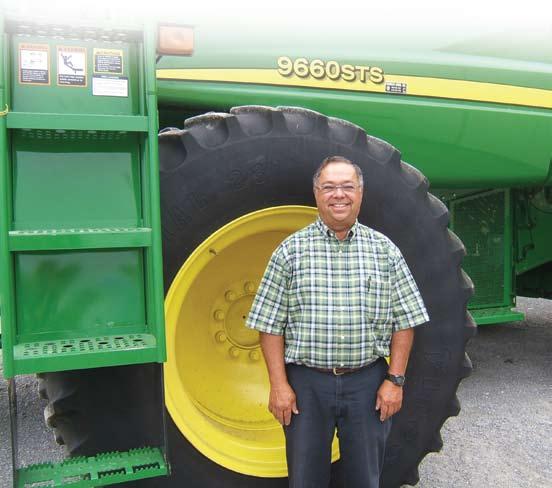
“Exports of Ohio soybeans are vital to the health of Ohio’s soybean industry, and Dale understands this,” says John Lumpe, OSC executive director.
“He will be an asset to USB and represent Ohio soybean farmers very well.”
Profit operates Agracola Farms with his brother and son, farming 2,400 acres of soybeans, corn and wheat. He and his wife, Judith, have three children and seven grandchildren.
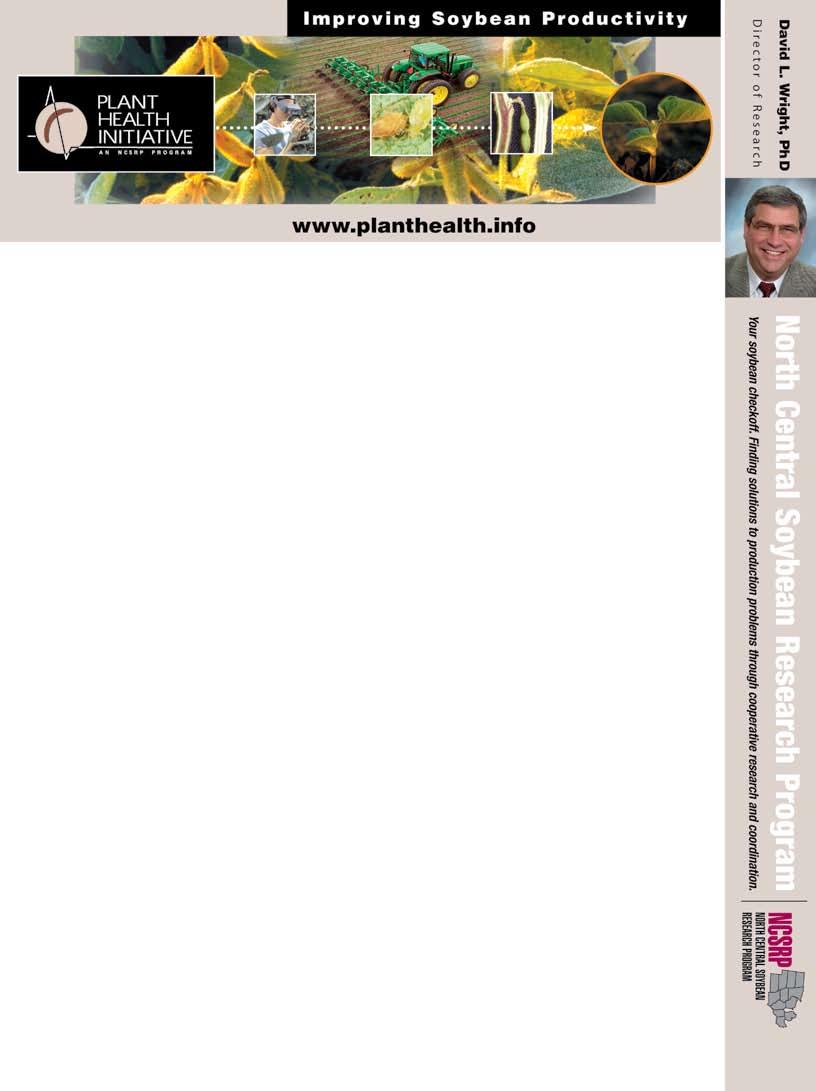
new online resource for Soybean Production information
Soybean producers and crop advisors have a new resource for information to improve their soybean production skills. Focus on Soybean is an initiative by the Plant Management Network to distribute the latest science-based soybean production information via the Web.
The central feature of Focus on Soybean is its educational webcasts. These currently include 15 narrated presentations totaling more than five hours of talks targeted toward consultants and producers in various regions. All are authored by university extension specialists recognized for their expertise and research-related soybean management practices.
The first round of webcasts includes the following, with others planned:
• Choosing Specialty Soybeans for the Right Niche Markets, Palle Pedersen, Iowa State University.
• Soybean Production: Variety Selection, Planting Date Decisions, Row Spacing and Seeding Rates, Shawn Conley, University of Wisconsin-Madison.
• The Reality of Asian Soybean Rust: Lessons Learned from Three Years of Management, Bob Kemerait, University of Georgia.
• Soybean Cyst Nematode: Biology, Scouting and Management, Greg Tylka, Iowa State University.
• Soybean Sudden Death Syndrome, John C. Rupe, University of Arkansas.
• Sclerotinia Stem Rot of Soybean: Pathology and Management, Craig Grau, University of WisconsinMadison.
• Soybean Viruses: Biology, Symptoms, and Management, Loren Giesler, University of Nebraska-Lincoln.
• Soybean Aphid Management, David Ragsdale, University of Minnesota.

Focus on Soybean is the first in a series of crop-specific resources targeted to agricultural professionals. These dynamic webcasts can be viewed at any time, at home, at the office or at the airport, so it’s easy to fit viewing them into the user’s busy schedule. The site is easy to find, just access www.plantmanagementnetwork.org, and easy to use, just click and listen.
One of the great things about this Web site is that it is linked to other sites like www.planthealth.info, which are loaded with other soybean production tools.
Much of the research discussed in these webcasts is funded by the soybean checkoff. That’s your soybean checkoff. Delivering Results.





















Funding research to find more uses for soybeans is just one of the things your checkoff does. One frequent partner is Battelle, a global science and technology company headquartered in Columbus. Products developed include everything from soy-based inks, toners and powder coatings to soybean-derived bio-lubricants and alternatives to petrochemical-based solvents. In addition to increasing the supply and demand for locally grown soybeans, initiatives like this help strengthen the bonds between Ohio’s agricultural and chemical industries.
To learn more about how your checkoff is supporting soybean research in Ohio, visit www.soyohio.org.
